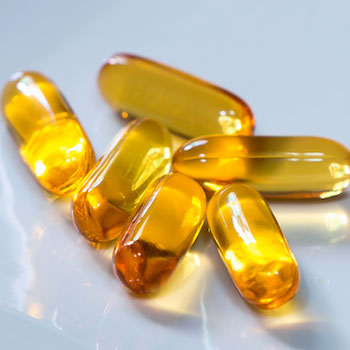Basu, S., Trieu, K., Bhat, S., Dai, Z., Leander, K., Gigante, B., . . . Marklund, M. (2021). Biomarkers of dairy fat intake, incident cardiovascular disease, and all-cause mortality: A cohort study, systematic review, and meta-analysis. PLOS Medicine, 18(9), article e1003763. doi:10.1371/journal.pmed.1003763
de Nazaré Santos Torres, R., Bertoco, J. P. A., Arruda, M. C. G., de Melo Coelho, L., Paschoaloto, J. R., Ezequiel, J. M. B., & Almeida, M. T. C. (2021). The effect of dietary inclusion of crude glycerin on performance, ruminal fermentation, meat quality and fatty acid profile of beef cattle: Meta-analysis. Research in Veterinary Science, 140, 171–184. doi:10.1016/j.rvsc.2021.08.019
de Souza, C. O., Vannice, G. K., Rosa Neto, J. C., & Calder, P. C. (2018). Is palmitoleic acid a plausible nonpharmacological strategy to prevent or control chronic metabolic and inflammatory disorders? Molecular Nutrition & Food Research, 62(1), article 1700504. doi:10.1002/mnfr.201700504
Deng, Y., Wang, L., Huang, J., Ding, H., & Wong, M. C. S. (2022). Associations between potential causal factors and colorectal cancer risk: A systematic review and meta‐analysis of Mendelian randomization studies. Journal of Digestive Diseases, 23(8-9), 435–445. doi:10.1111/1751-2980.13130
Frigolet, M. E., & Gutiérrez-Aguilar, R. (2017). The role of the novel lipokine palmitoleic acid in health and disease. Advances in Nutrition: An International Review Journal, 8(1), 173S–181S. doi:10.3945/an.115.011130
Hosseinkhani, S., Dehghanbanadaki, H., Aazami, H., Pasalar, P., Asadi, M., & Razi, F. (2021). Association of circulating omega 3, 6 and 9 fatty acids with gestational diabetes mellitus: A systematic review. BMC Endocrine Disorders, 21(1), article 120. doi:10.1186/s12902-021-00783-w
Larmo, P. S., Järvinen, R. L., Setälä, N. L., Yang, B., Viitanen, M. H., Engblom, J. R. K., . . . Kallio, H. P. (2010). Oral sea buckthorn oil attenuates tear film osmolarity and symptoms in individuals with dry eye. The Journal of Nutrition, 140(8), 1462–1468. doi:10.3945/jn.109.118901
Larmo, P. S., Kangas, A. J., Soininen, P., Lehtonen, H.-M., Suomela, J.-P., Yang, B., . . . Kallio, H. P. (2013). Effects of sea buckthorn and bilberry on serum metabolites differ according to baseline metabolic profiles in overweight women: A randomized crossover trial. The American Journal of Clinical Nutrition, 98(4), 941–951. doi:10.3945/ajcn.113.060590
Larmo, P. S., Yang, B., Hurme, S. A. M., Alin, J. A., Kallio, H. P., Salminen, E. K., & Tahvonen, R. L. (2009). Effect of a low dose of sea buckthorn berries on circulating concentrations of cholesterol, triacylglycerols, and flavonols in healthy adults. European Journal of Nutrition, 48(5), 277–282. doi:10.1007/s00394-009-0011-4
Larmo, P. S., Yang, B., Hyssälä, J., Kallio, H. P., & Erkkola, R. (2014). Effects of sea buckthorn oil intake on vaginal atrophy in postmenopausal women: A randomized, double-blind, placebo-controlled study. Maturitas, 79(3), 316–321. doi:10.1016/j.maturitas.2014.07.010
Lehtonen, H. M., Suomela, J. P., Tahvonen, R., Yang, B., Venojärvi, M., Viikari, J., & Kallio, H. (2011). Different berries and berry fractions have various but slightly positive effects on the associated variables of metabolic diseases on overweight and obese women. European Journal of Clinical Nutrition, 65(3), 394–401. doi:10.1038/ejcn.2010.268
Matthan, N. R., Dillard, A., Lecker, J. L., Ip, B., & Lichtenstein, A. H. (2009). Effects of dietary palmitoleic acid on plasma lipoprotein profile and aortic cholesterol accumulation are similar to those of other unsaturated fatty acids in the F1B Golden Syrian hamster. The Journal of Nutrition, 139(2), 215–221. doi:10.3945/jn.108.099804
Nunes, E., & Rafacho, A. (2017). Implications of palmitoleic acid (palmitoleate) on glucose homeostasis, insulin resistance and diabetes. Current Drug Targets, 18(6), 619–628. doi:10.2174/1389450117666151209120345
Olas, B., Skalski, B., & Ulanowska, K. (2018). The anticancer activity of sea buckthorn [Elaeagnus rhamnoides (L.) A. Nelson]. Frontiers in Pharmacology, 9, 232. doi:10.3389/fphar.2018.00232
Susan, D., Volpi Lagreca, G., Alende, M., & Long, N. (2014). Palmitoleic acid reduces intramuscular lipid and restores insulin sensitivity in obese sheep. Diabetes, Metabolic Syndrome and Obesity: Targets and Therapy, 2014(7), 553–563. doi:10.2147/dmso.S72695
Yang, Z.-H., Miyahara, H., & Hatanaka, A. (2011). Chronic administration of palmitoleic acid reduces insulin resistance and hepatic lipid accumulation in KK-Ay mice with genetic type 2 diabetes. Lipids in Health and Disease, 10(1), 120. doi:10.1186/1476-511x-10-120
Yang, Z.-H., Takeo, J., & Katayama, M. (2013). Oral administration of omega-7 palmitoleic acid induces satiety and the release of appetite-related hormones in male rats. Appetite, 65(1 June), 1–7. doi:10.1016/j.appet.2013.01.009

